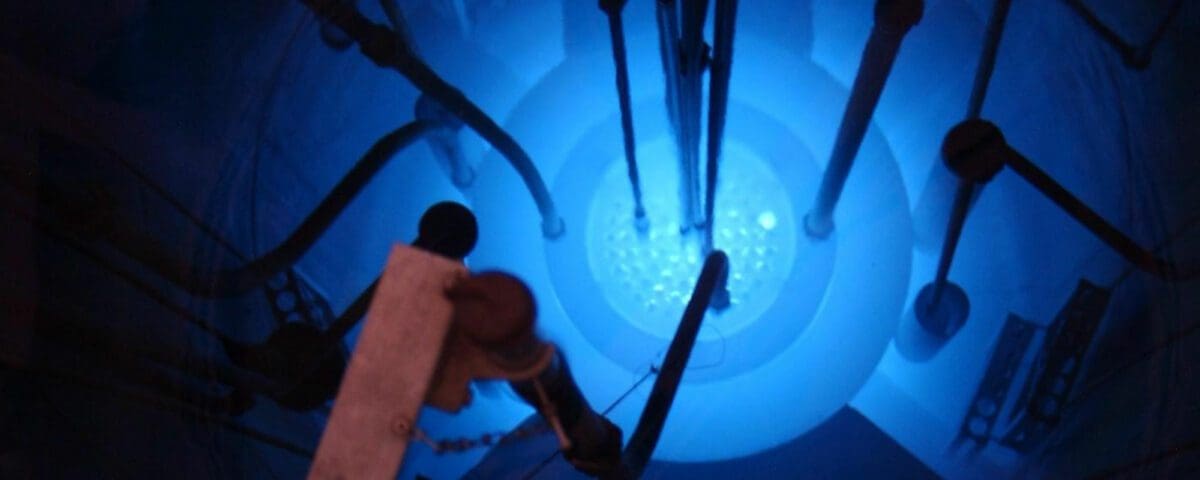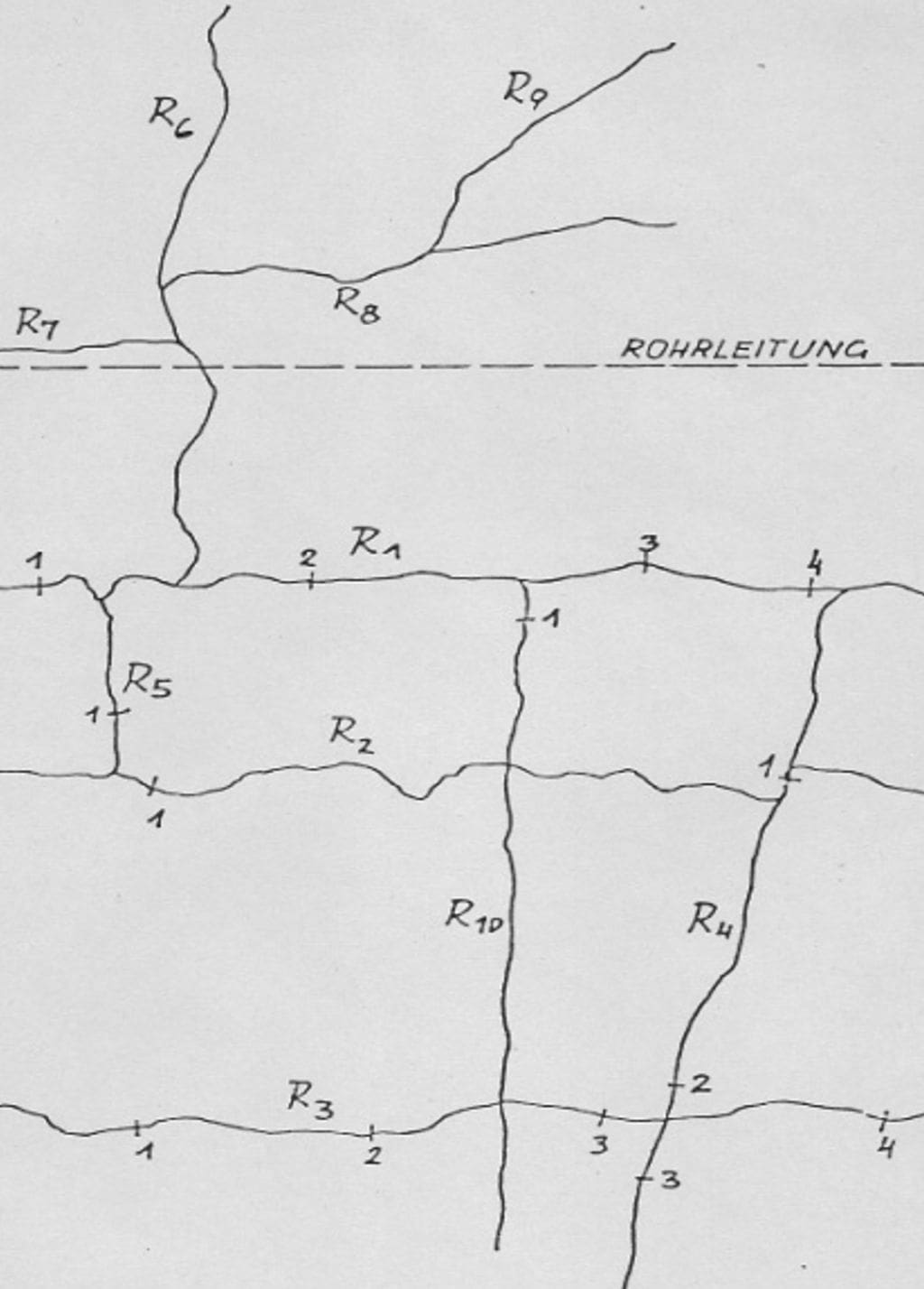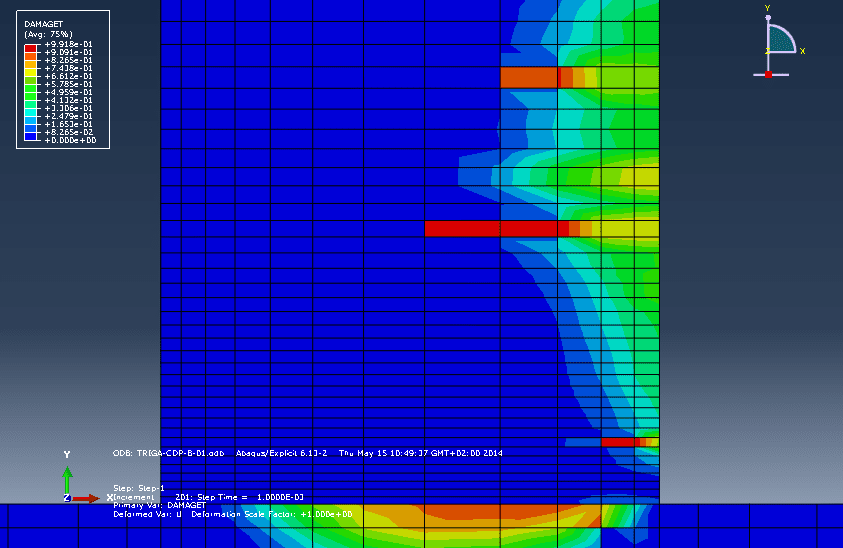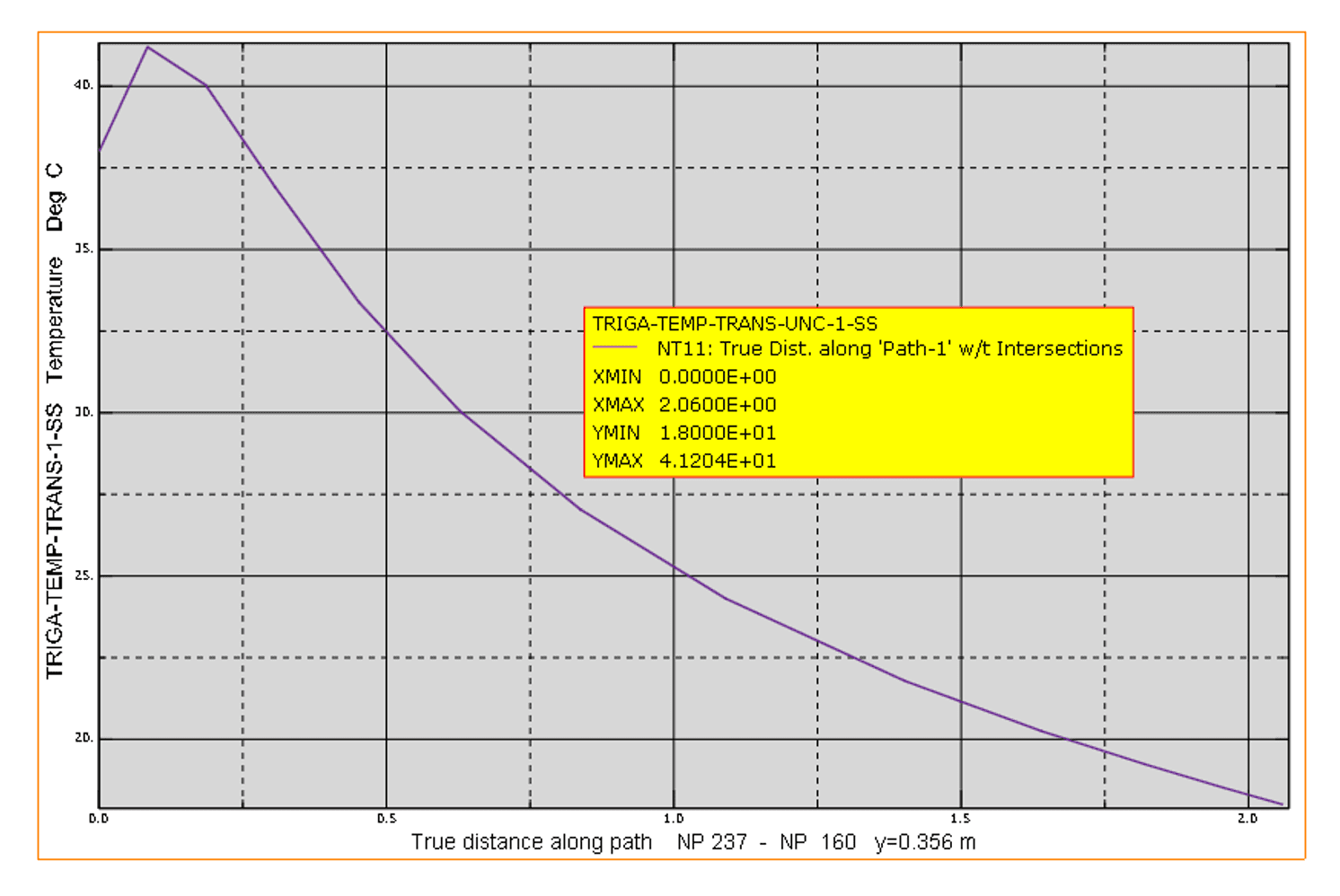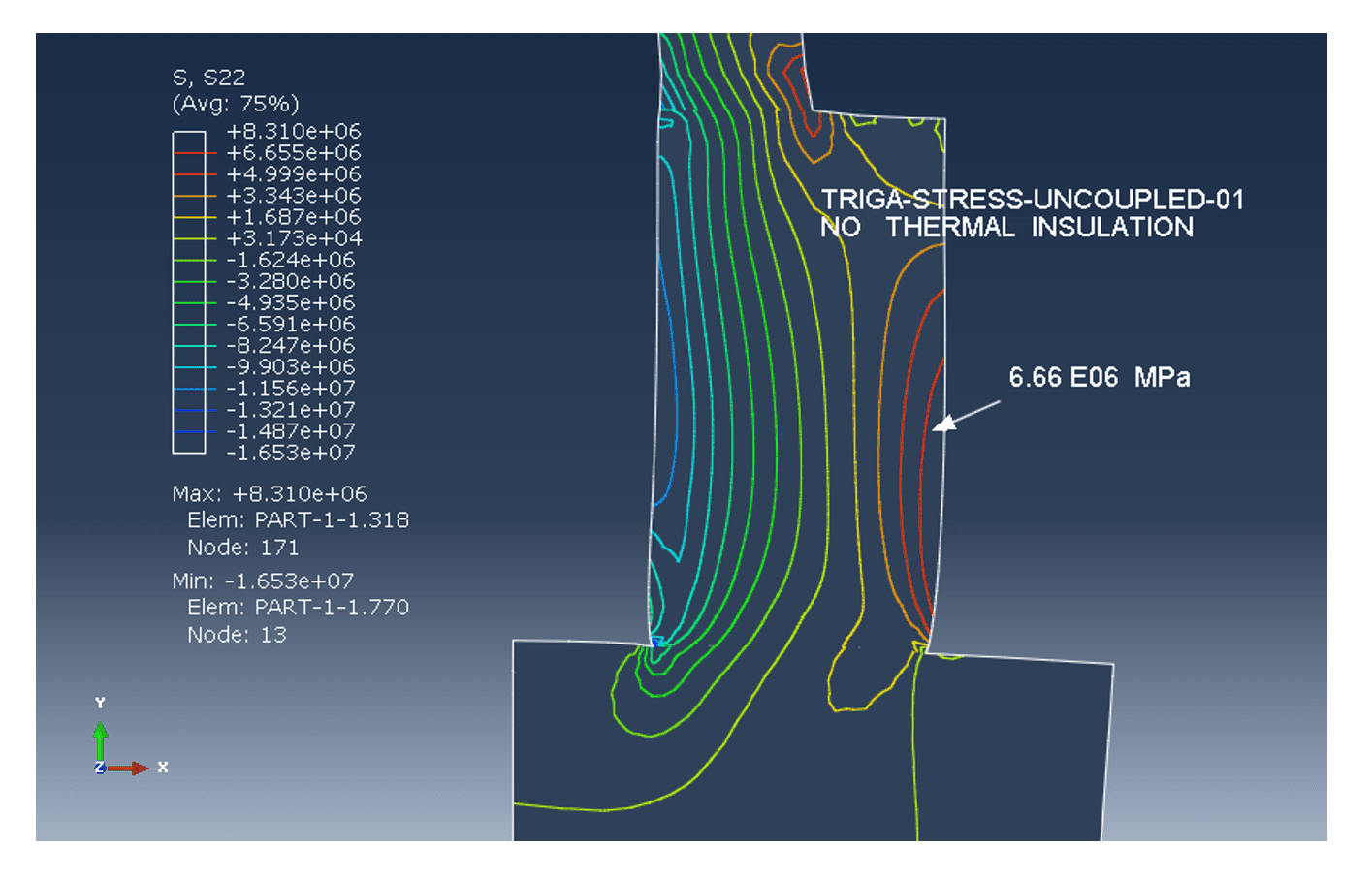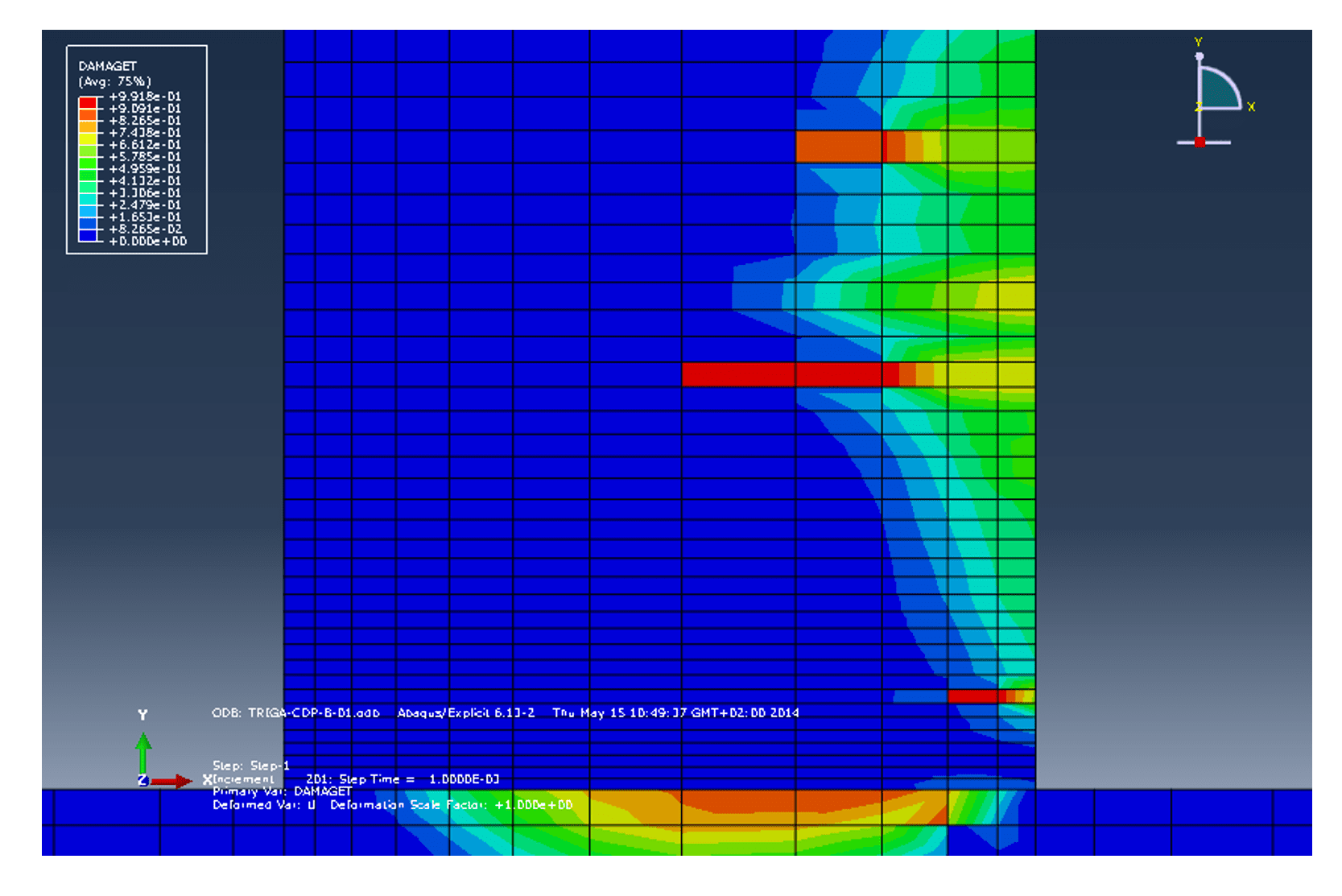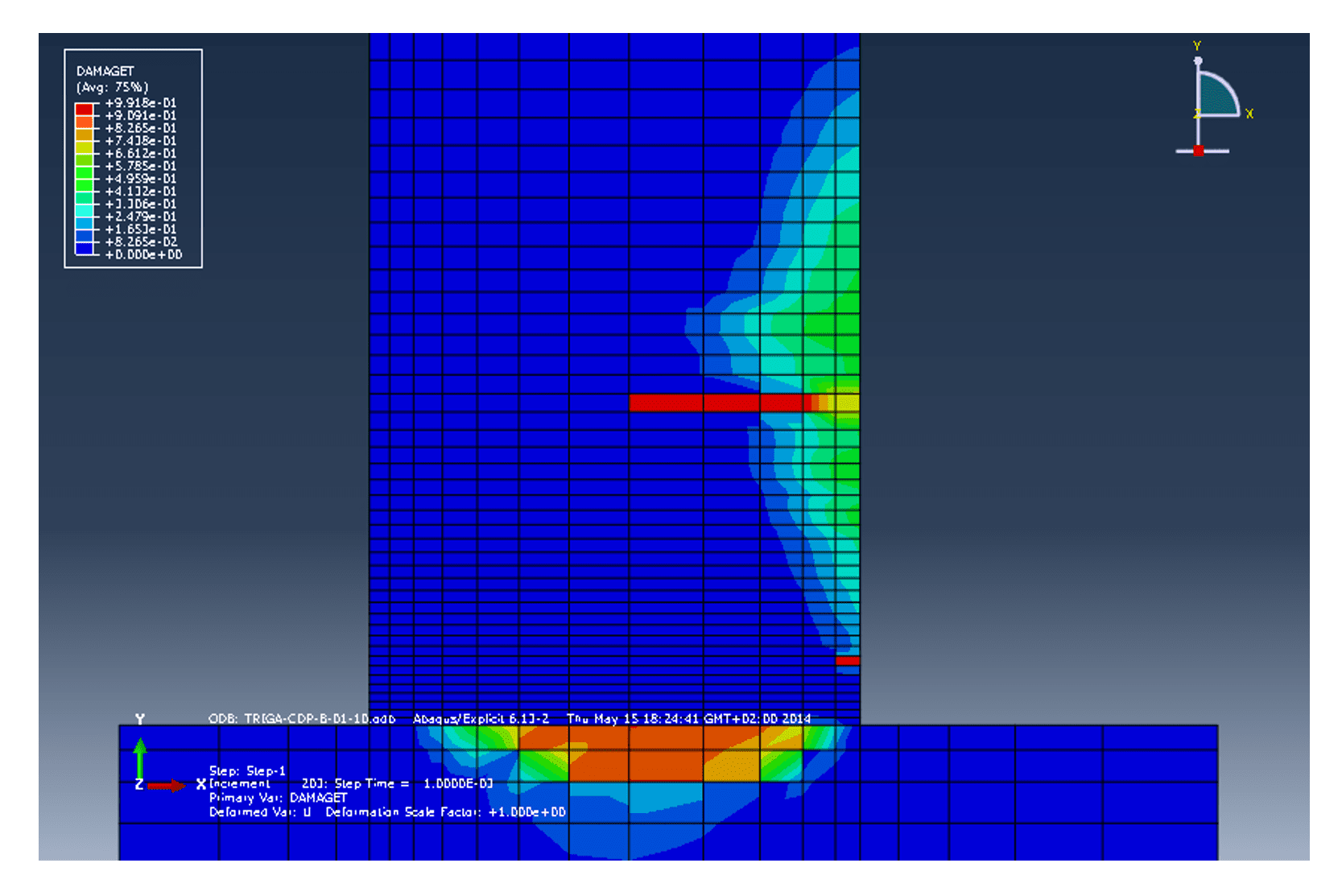TRIGA Mark-II Reactor - Cracking-Investigation
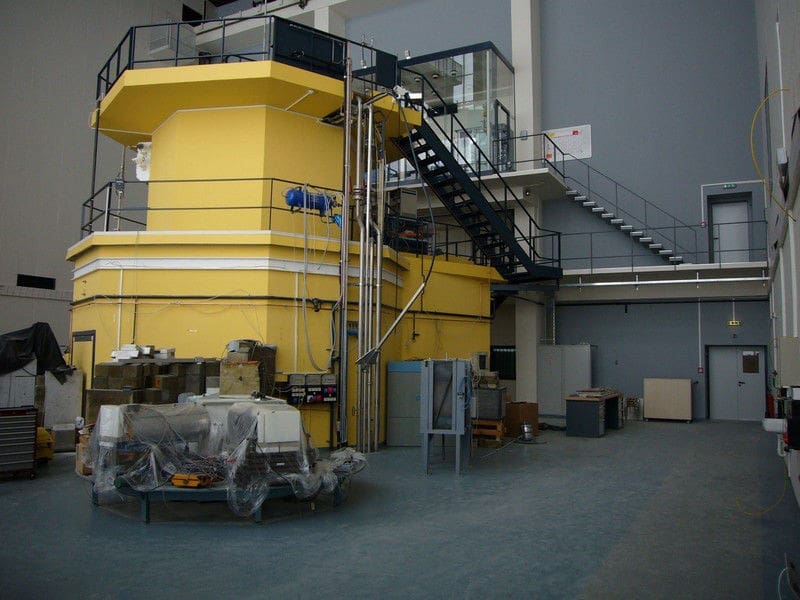
Mehr Informationen unter: https://www.tuwien.at/trigacenter/trigareaktor
The research reactor of the Institute of Atomic and Subatomic Physics of the University of Technology Vienna is a reactor type TRIGA Mark II whose biological shield is formed in the lower half of a 2 m thick weakly reinforced barite concrete and in the upper half of a 1 m thick setup of normal concrete. During years of operation, numerous cracks have arisen in the shielding concrete.
Experimental, analytical and numerical investigations included the computation of the temperature profile and the associated stress state due to the temperature difference between the reactor – core and the exterior of the shielding concrete as well as the heating in consequence of the gamma emission. The assessment of the damage potential generally was performed by means of the stress spectrum [1,2].
Experimental, analytical and numerical investigations included the computation of the temperature profile and the associated stress state due to the temperature difference between the reactor – core and the exterior of the shielding concrete as well as the heating in consequence of the gamma emission. The assessment of the damage potential generally was performed by means of the stress spectrum [1,2].
Specific fracture mechanics investigations for cementitious materials (crack development, materials testing) at that time were not yet fully developed and therefore have not been carried out - it will be verified in this review.
Reactor Shielding without Thermal Insulation
Reactor Shielding without Thermal Insulation
Temperature
Max T = 41.20° C Min T = 18° C
Max T = 41.20° C Min T = 18° C
Stress Distribution (Tensile Stresses)
Max σyy = + 8.31 MPa
Max σyy = + 6.96 MPa
Damage Pattern
ABAQUS 6.13 CONCRETE DAMAGED PLASTICITY
The final assessment, that an extra thermal insulation of 10 cm is inefficient [1,2] is also confirmed by fracture mechanics approach.
[1] H.Linsbauer, P.Maydl; Vergleich: zweier methoden zur Berechnung der Wärmespannungen in dickwandigen Reaktorbehältern, Bauingenieur 55, (1980) 131-134[2] H. Böck, H.Linsbauer,P.Maydl; Zur Frage der Rißbildung im Abschirmbeton eines Forchungsreaktors des Typs TRIGA Mark II, Atomkernenergie, 34(1979), 92-93

